The Samsung Galaxy S6 and S6 edge Review
by Joshua Ho on April 17, 2015 9:00 AM EST- Posted in
- Smartphones
- Samsung
- Mobile
- Galaxy S6
- Galaxy S6 Edge
NAND Performance: The First UFS Phone
Storage performance is often a critical area for user performance, as applications cannot be cached in RAM at every possible moment. Camera performance is also often limited by storage performance as RAM buffers can only do so much to maintain performance before it’s necessary to commit photos to non-volatile storage.
However due to the memory hierarchy to some extent, storage performance is often hard to notice once it’s at a point where things are “good enough”. Unfortunately, in some cases we can see OEMs failing to include sufficiently performant solid-state storage, which can be a major pain point in the user experience when random read/write performance is low enough that there are noticeable IO pauses as the system has to wait for data to be loaded from storage.
The Samsung Galaxy S6 family is the first shipping implementation of UFS (Universal Flash Storage) 2.0 standard, which makes the internal storage model less like an SD card in nature. When comparing the eMMC 5.1 standard to the UFS 2.0 standard, we see a move from a the 400 MB/s maximum of the eMMC 5.1 standard with HS400 physical link interface to MIPI M-PHY, which allows for a theoretical maximum of around 720 MB/s and should be more efficient in transmitting data than the current eMMC standard. In addition, UFS makes it possible to do full duplex communication, which means that reads and writes can happen simultaneously. There's also a command queue, which helps to avoid inefficiencies that could arise from waiting for commands once a command has been processed by the storage controller, and utilizes the SCSI protocol to facilitate these new features at the interface level.
As for the Galaxy S6 itself, the UFS implementation Samsung is using is Samsung developed. Samsung's current implementation only supports up to 300 MB/s (or 2.4 Gbps) transfer rates as a theoretical maximum, so from an interface perspective it's still not reaching the full capabilities of the standard. Though even at a cap of 300MB/sec, it still stands to be a significant improvement over typical eMMC solutions.
Finally, on a technical note, the 32GB models are of the model KLUBG4G1BD-E0B1 with a maximum queue depth of 16.
In order to test storage performance, we use Androbench with some custom settings to get a reasonable idea of performance in this area, although this test isn’t an exhaustive examination of storage performance by any means.
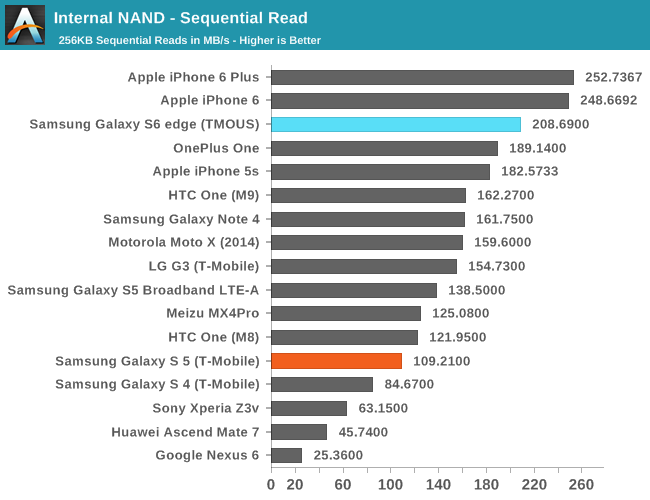
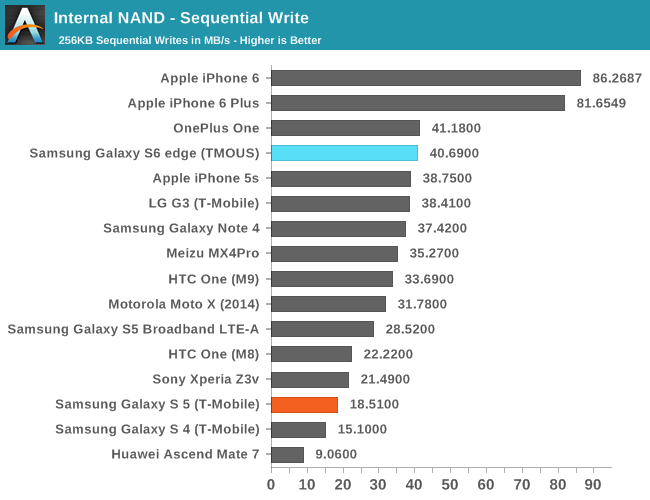
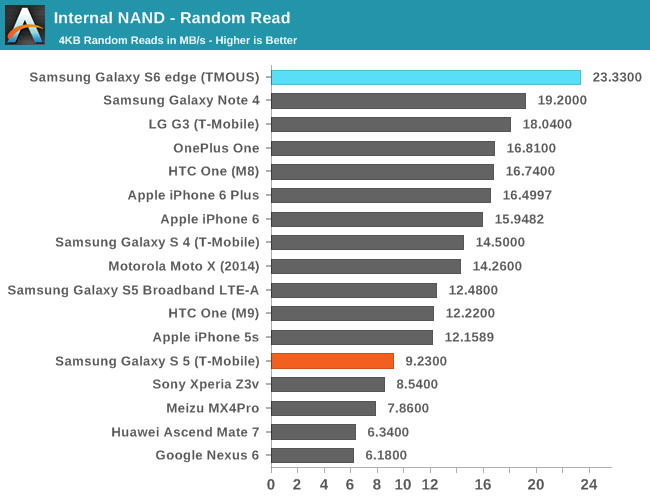
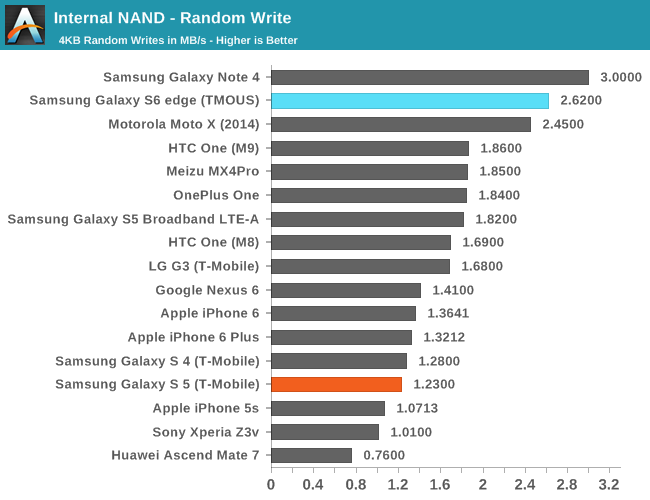
The Galaxy S6 performs rather impressively in our standard storage test, but not as fast as one might have hoped. This is due to the nature of the Androbench 3.6 test, which only tests a single IO thread, which won’t use the UFS storage of the Galaxy S6 to its full extent. In order to see the kind of difference that UFS really makes, I ran the same test again on Androbench 4.x, which does support multiple IO threads. However, as our iOS storage test and Androbench 3.6 don’t support more than a single IO thread we will continue to present both results for now.
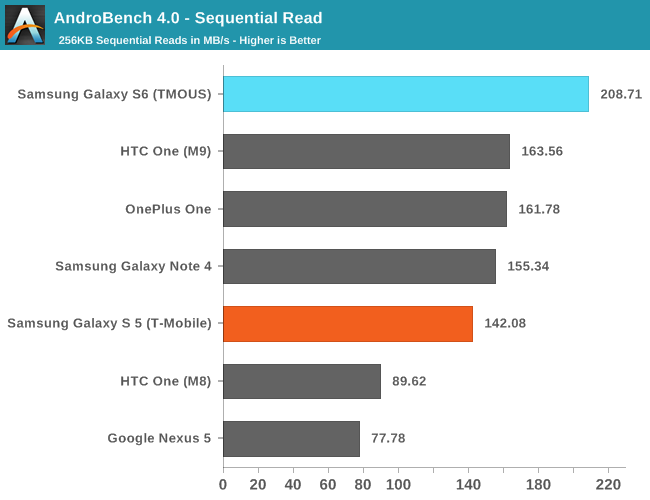
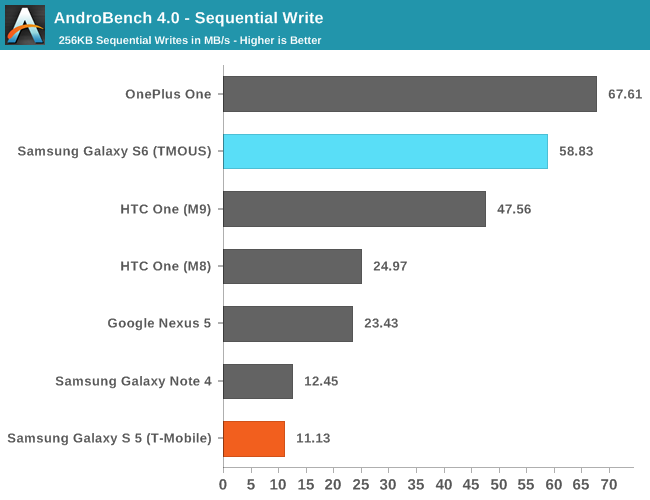
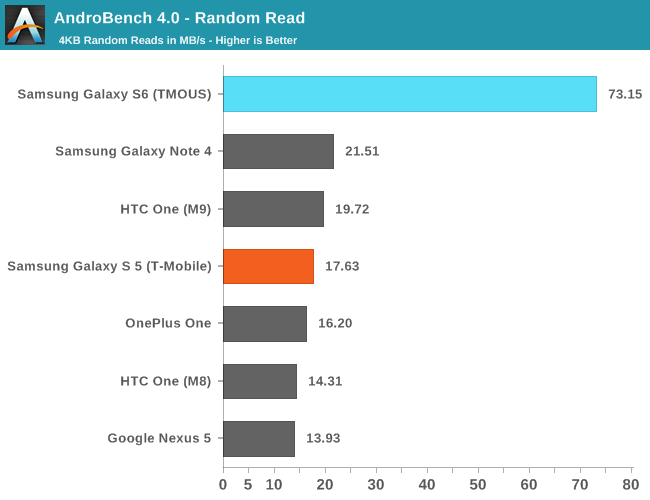
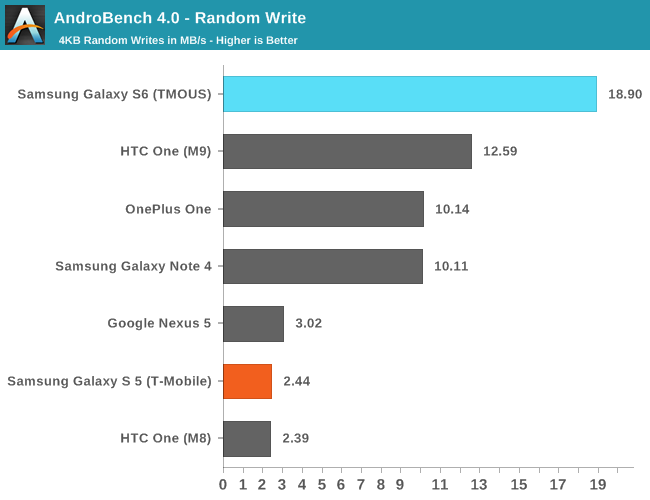
Overall, there are some immense benefits in storage performance here, especially in random IO performance. The Galaxy S6 has some of the fastest storage available in a phone today as far as I can tell given that this is basically a pure MLC solution, and shouldn’t have any real issue with storage performance holding back the rest of the phone over the course of 1-3 years as long as a reasonable amount of free space is kept to allow efficient storage management.


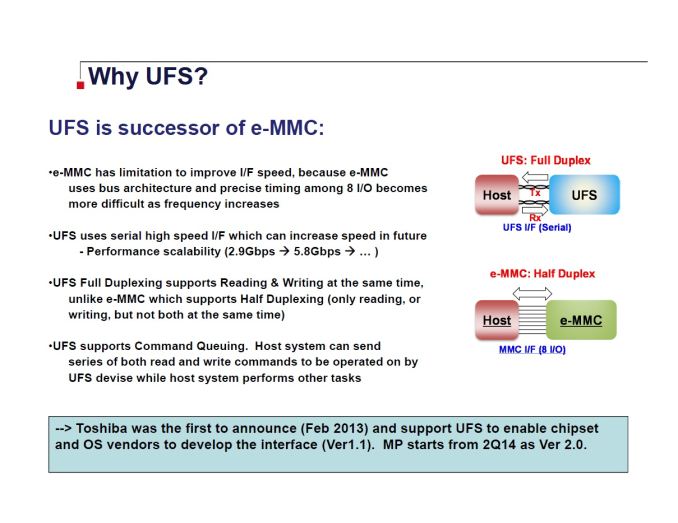








306 Comments
View All Comments
akdj - Friday, April 24, 2015 - link
That's NOT the same display. The Note 4 was a step up from 5Active and this is an even bigger step 'up' for AMOLED. The anomalies have been talked about in many reviews. As well as some purple fringing shooting low light (w/light source, like a candle). Killer display though!Refuge - Friday, April 17, 2015 - link
I'm not entirely sure, I kind wish he had elaborated more on it. Especially when this is a flagship phone and he says there is a defect with the perfect screen.But they only thing I can think of is how it seems to reflect much like a bubble would in direct sunlight. Maybe there is a risk of this rainbow effect screwing with color accuracy in direct sunlight? I'm not entirely sure either.
Ammaross - Friday, April 17, 2015 - link
I see two vertical dark bars on left and right sides of the screen and one 1/4 from the top horizontally. Maybe that's what he's referring to...Peichen - Saturday, April 18, 2015 - link
I see the same thing as Ammaross. I guess some of you need to have your screen calibrated. I can see the dark bars on my home PC but I guess I won't be able to see it on the cheap/crap workstation at work.Maxpower2727 - Friday, April 17, 2015 - link
The only thing I saw in that photo was reflected light, which is to be expected with any phone and could hardly be considered a "defect." I really don't understand what he was getting at with that.JoshHo - Friday, April 17, 2015 - link
It was surprisingly hard to capture, but it's the photo of the horizontal/vertical bars when the display was under strong sunlight.arayoflight - Friday, April 17, 2015 - link
Josh, I think the front facing camera has a1/4.1" sensor, not 1/3". It was conformed by Samsung tomorrow.Also, the IMX240 has 1.2 micron pixels, not 1.12.
Correct these 2 mistakes. The review was great though.
JoshHo - Friday, April 17, 2015 - link
Apologies. I have fixed the FFC sensor size.To my knowledge the IMX240 uses 1.12 micron pixel size, going by Chipworks measurements and the released spec for the S5K2P2 sensor which has the same pixel count and sensor size.
arayoflight - Saturday, April 18, 2015 - link
The s5k2p2 has 1.12 micron size. Also they're both 1/2.6" and identical resolution.But 1/2.6" necessarily doesn't mean they're same size. It just tells the size of the disk and hence there can be a difference.
I think also on the Wiki page of IMX240 it's 1.2 micron. Though it's a different 4:3 IMX240 but I doubt they'll change the pixel pitch for a custom IMX240 used by Samsung.
Just look into it. Even I want to know the perfect pixel size :)
will54 - Monday, April 20, 2015 - link
Its the one horizontal stripe and the 2 vertical stripes on each side of the screen